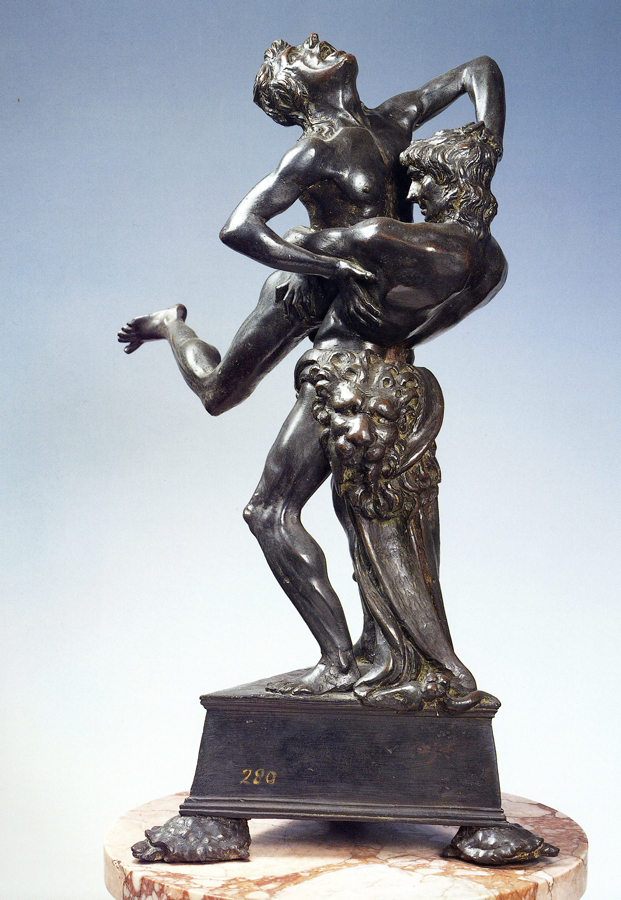Located
in Rome, Italy, Fontana dei Quattro Fiumi or "Fountain of the Four
Rivers" is a fountain designed by Gianlorenzo Bernini for Pope Innocent X
in 1651.
The fountain is a composite of four major rivers of the four continents through
which papal authority had spread: the Nile River in Africa, the Danube in
Europe, the Ganges in Asia, and the Platte in the Americas. Above them, an
ancient Egyptian obelisk is surmounted with the Pamphili family symbol of a
dove with an olive twig. I like this fountain because of its complex structures
and statues which ultimately express the excellent skills of Renaissance master
Gianlorenzo Bernini.
Sunday, October 28, 2012
Gian Lorenzo Bernini - David
David is a marble
sculpture created by Italian artist Gianlorenzo Bernini in seven months from 1623-1624. The
statue depicts the biblical David who was about to throw the stone that would
bring down Goliath. The statue has several interesting features which show the prosperity
of the Renaissance period. Aside from that, with this statue, Bernini also emphasized
the rise of Baroque in sculpture where artist used exaggerated motion and
clear, easily interpreted detail to produce drama and tension.
Saturday, October 20, 2012
Albrecht Altdorfer- The Battle of Alexander at Issus
The Battle of Alexander
at Issus is a 1529 oil painting by German artist Albrecht Altdorfer ca.
1480–1538. This artwork depicts the battle between Alexander the Great and the
Persian Empire where the victory was on Alexander the Great’s side. I like this
painting because it illustrates enormous landscape with vivid colors and
distinctive details such as the present of the moon and the sun on the sky at
the same time.
Melencolia I - Albrecht Dürer
Melencolia I is an engraving
by the German Renaissance master, Albrecht Dürer, in 1514. This artwork was a “self-portrait”
of Durer’s personality. I like this engraving because of its concept emphasizes the fact that an
artist sometimes cannot produce any work even though he is surrounded by all the
tools he needs.
Michelangelo- Sistine Chapel ceiling
This enormous fresco painting
on the ceiling of the Sistine Chapel was created by Michelangelo between 1508
and 1512. This incredible artwork depicted the doctrine of humanity's need for
Salvation as offered by God through Jesus. The complex design of images in the
painting as well as the vibrant color of all the details has shown many features
of High Renaissance art including humanism and the devotion in divine art of
the Catholic Churches.
Leonardo da Vinci – Embryo in the Womb
This sketch of an
embryo in the womb was drawn by Leonardo da Vinci using black and red chalk
with some pen and ink wash on paper ca. 1510. It was an interesting sketch since
it clearly showed that Leonardo da Vinci was indeed a renaissance man, an
individual who has well knowledge in various field. In fact, along with being a
brilliant artist, Leonardo da Vinci also had his interests in scientific
illustration as well as in discovery of new ideas. With this vivid sketch of an
embryo, Leonardo da Vinci opened up a novel way for the field of medical
illustration.
Pollaiuolo – Hercules and Antaeus
This bronze sculpture, named Hercules and
Antaeus, was made by Antonio Del Pollaiuolo ca. 1475. I like this artwork because
it well illustrated the pain and the struggle of an individual in combat. This
feature ultimately reveals that the artist did comprise humanism, an important
concept of Renaissance era, into his sculpture.
Botticelli - Birth of Venus
This artwork, named the Birth of Venus, was painted by Botticelli ca. 1486. Its medium is
tempera on canvas. I like this picture because it depicted the revolution of art
during Renaissance period in which the artist brought much humanism into the
picture. The nudity of Venus is, a controversial elements during the artist's era, also a distinctive part of the drawing. In addition to that, the unique color and impeccable depth contributed to the beauty of the drawing.
Subscribe to:
Comments (Atom)



.jpg/300px-Melencolia_I_(Durero).jpg)



